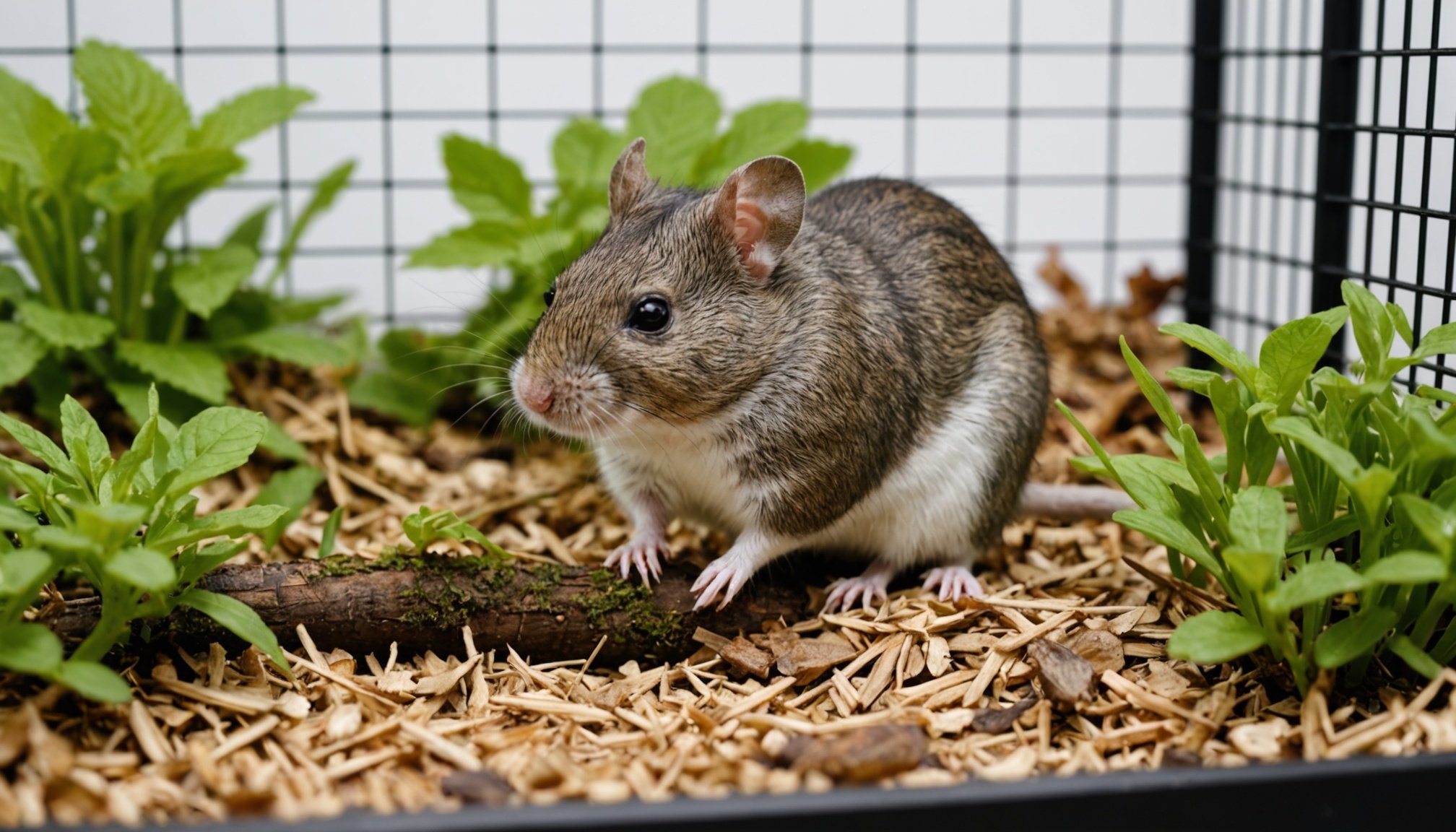Understanding Small Rodent Housing Needs
Creating an ideal environment for a small rodent requires knowing their habitat requirements. The size of the enclosure is pivotal. Providing adequate space for exploration not only ensures comfort but also meets their natural inclination to roam.
Ventilation is crucial in maintaining a healthy home. Fresh air flow can stave off respiratory issues, alongside appropriate temperature and humidity control to match their natural climate preferences. Homing these little creatures in poorly ventilated areas can lead to serious health problems, emphasizing the necessity of regular airflow.
In the same genre : How to Design a Roomy Sanctuary for Your Booming Maine Coon Kitten: Top Tips Revealed
When deciding on housing materials, safety sits at the forefront. Common materials like plastic and wire cages are frequently used but need consideration for their safety aspects. Care must be taken to avoid sharp edges or toxic substances which could harm the rodent. Moreover, ensuring the habitat materials are resistant to chewing is essential, as rodents can gnaw through unsuitable materials.
Being mindful of these rodent care aspects will result in a thriving pet. Keep in mind that every rodent species may have slightly different housing requirements. Doing thorough research for your specific pet will vastly improve their quality of life. By understanding the essentials of small animal housing, one can foster a nurturing and safe haven for these beloved companions.
Have you seen this : Comprehensive blueprint for crafting the ideal saltwater clownfish aquarium setup
Safety Considerations for Rodent Habitats
Creating a safe environment for your small rodents involves eliminating potential hazards. Begin by choosing a habitat with secure enclosures to prevent escapes. These animals are adept at squeezing through small openings, so check that the cage gaps are sufficiently narrow. Look out for sharp edges or loose components that could harm your pet.
Safe Substrate Options
A critical aspect of rodent safety is choosing the right substrate. Avoid materials like cedar or pine shavings, which can cause respiratory issues. Instead, opt for paper-based bedding or aspen shavings, which are non-toxic and comfortable. Safe substrates not only keep rodents healthy but provide comfort and enrichment.
Importance of Secure Enclosures
Beyond substrate, ensuring the enclosure remains secure is vital for pet safety. Latches should be robust, and walls should be high enough to deter escape. Regularly inspect for wear and tear that might compromise the habitat’s integrity. Investing in a well-constructed cage reduces the risk of injury and fosters a secure environment.
By addressing these habitat hazards, you significantly increase your rodent’s safety and well-being, allowing them to explore and interact freely within their home without unnecessary risks.
Creating an Engaging Environment
Designing a stimulating habitat is essential for rodent happiness. This involves integrating enrichment ideas and innovative decor within their space.
Types of Enrichment Activities
Physical stimulation is vital for rodents, and activities such as tunnels and climbing structures provide a perfect outlet. These elements promote exercise and mimic their natural behaviours, enhancing their overall well-being. Incorporating sensory experiences with interactive toys and chewable items encourages exploration and mental engagement.
Another aspect is social interaction. When feasible, multi-pet setups can provide companionship and reduce loneliness in social rodent species. However, it’s essential to ensure compatibility to prevent territorial disputes.
Utilizing Space Effectively
Effective use of space maximises rodent stimulation. Consider layering and zoning different areas within the habitat to include distinct zones for eating, playing, sleeping, and hiding. Vertical spaces, such as climbing platforms and ledges, expand the living area and encourage exploration, which promotes physical and mental health. Creative decorations that are both safe and stimulating further enhance the habitat’s enrichment value.
Recommended Products
Opt for toys and accessories that are specifically designed for small rodents. Additionally, DIY ideas like customised cardboard creations or softly quilted hammocks offer affordable enrichment solutions. Best commercial products effortlessly blend safety with stimulation to provide a holistic and enjoyable environment for your rodent.
DIY Habitat Ideas for Rodents
Creating a custom rodent housing solution allows a personal touch that caters to both small animal housing needs and personal creativity. Here are some easy DIY ideas that can enrich your pet’s environment while ensuring safety and satisfaction.
Begin by selecting safe materials like untreated wood or non-toxic paints, ensuring your custom rodent habitat promotes rodent care without compromising safety. Use these materials to craft engaging elements like tunnels, platforms, and chew toys.
Expand on these by crafting unique enclosures that offer ample rodent stimulation. Create step-by-step guides for assembling different habitat components, such as building ramps for climbing or using cardboard to create mazes. This turns construction into a creative pet project while meeting rodent habitat requirements.
Tips for customization include designing removable sections to adapt the habitat as your rodent grows or changes. Adding elements like hammocks or wheels caters to individual preferences, keeping them active and content.
These creative projects not only enhance the rodent’s life but also offer a fulfilling experience for owners, making DIY housing a rewarding endeavour. By focusing on the essentials of small animal care, you can create a safe, customized environment that enriches your pet’s life.
Routine Maintenance and Health Monitoring
Maintaining the well-being of your small rodent is a fundamental aspect of rodent care. Regular cleaning routines not only promote habitat cleanliness but also actively prevent illnesses. It is essential to establish a consistent schedule for cleaning bedding, disinfecting surfaces, and removing droppings. This ensures that the living environment remains hygienic and pleasant for your pet.
Monitoring your rodent’s behaviour is crucial in identifying potential health issues early on. Any significant changes in appetite, like eating less than usual, or noticeable shifts in activity levels can be indicators of underlying problems. Observing these aspects routinely enables prompt intervention, safeguarding the animal’s well-being.
Addressing signs of stress is another key task in pet health management. Stress can manifest through behaviours such as excessive chewing, aggression, or self-harm. Providing ample enrichment, like toys and social interaction, can mitigate these stress factors. Additionally, assessing the habitat for unfamiliar noises or disturbances that might be causing anxiety allows for a more serene environment.
By integrating these practices into everyday rodent care, owners can maintain a clean, healthy habitat while ensuring their pets lead a stress-free and vibrant life.



